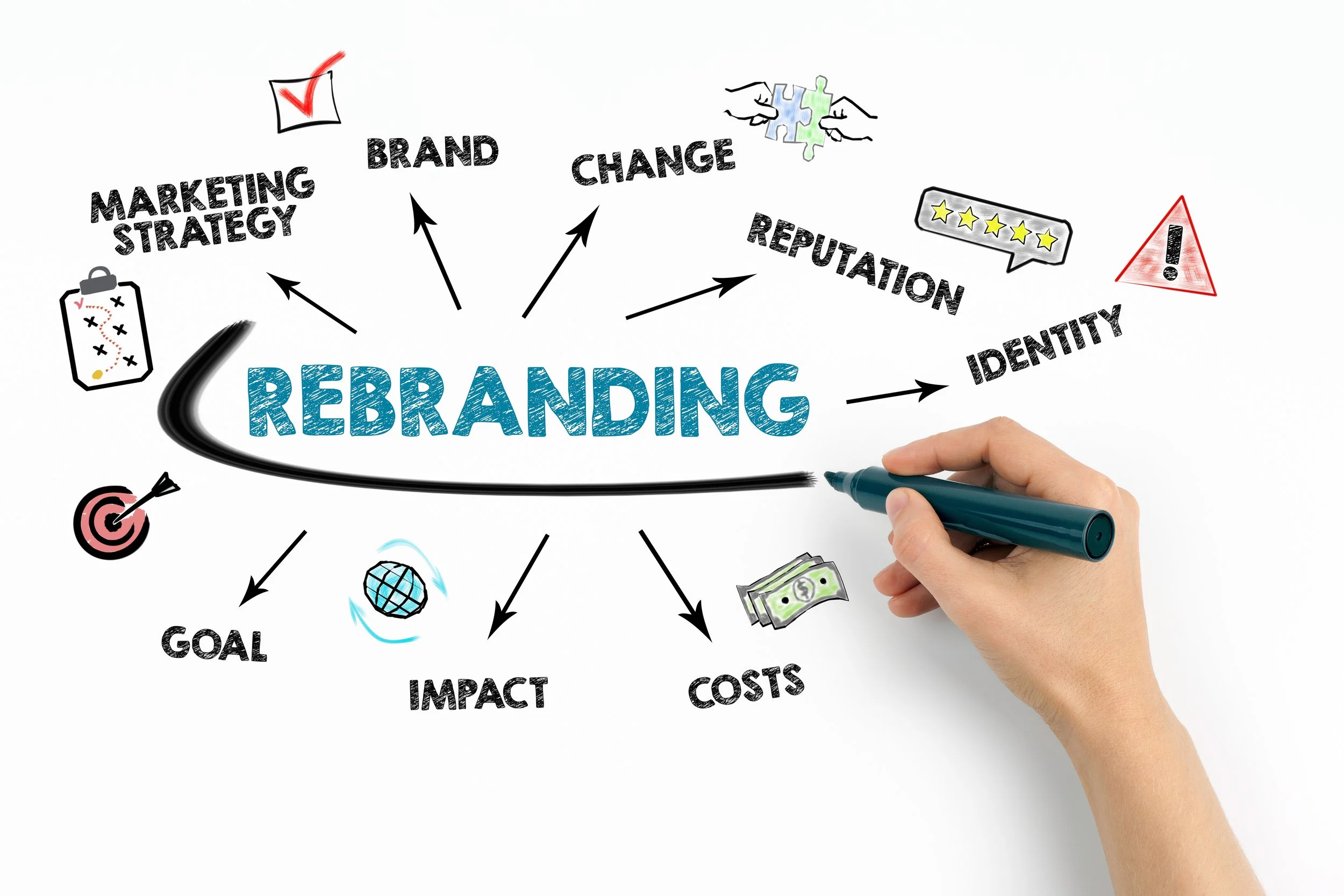Key tips for successful branding and rebranding: lessons from 25 years experience
Rebranding is more than just a fresh logo or catchy tagline—it's about reshaping the way your audience perceives you, adapting to changing markets, and staying relevant. After more than 25 years of experience working with brands of all sizes, I’ve seen what works and what doesn’t when it comes to both branding and rebranding. The process can be exhilarating, but it's filled with potential pitfalls. In this blog, I’ll share my top tips, including lessons I’ve learned the hard way, to help you navigate your next branding journey with confidence.
1. Set Clear Goals and Audience
Tip: Start by defining why you're rebranding and who your new audience will be. Is it to reach a different market segment, modernize the brand, or reposition it after a change in your business model? This clarity will guide all decisions and keep your rebrand focused.
Trap: Don’t rebrand for rebranding's sake. It’s costly, time-consuming, and you risk losing existing brand equity. Sometimes, a simple tweak to your USP (Unique Selling Proposition) or communication strategy can suffice.
2. Conduct Thorough Market Research
Tip: A deep dive into customer preferences, competitor strategies, and industry trends will inform your rebranding. What resonates with your audience? How are competitors positioning themselves? These insights will help avoid missteps.
Trap: Neglecting research can result in costly oversights, such as adopting a color scheme too similar to a competitor’s or choosing a name that’s already registered, leading to legal battles.
3. Tell a Compelling Brand Story
Tip: Brand storytelling is key. Your brand’s evolution should be more than cosmetic. Use it to tell a genuine story about your values, mission, and what sets you apart. A great brand story builds trust and fosters emotional connections with customers.
Trap: A weak or superficial story makes it difficult to engage your audience and build loyalty. If your story doesn’t resonate, you may miss the opportunity to make a lasting impression.
4. Establish a Consistent Visual Identity
Tip: Ensure your visual identity—logo, colors, typography, and imagery—reflects your new brand positioning. Consistency is key across all platforms, from social media to packaging. Train your team so everyone represents the brand consistently.
Trap: Over-complicating your brand style guide can backfire. Keep it simple and actionable, ideally 1-5 pages, so it’s easy to follow. A guide that’s too long will often be ignored.
5. Engage Internal Stakeholders
Tip: Involve your team early in the process. Employees are your best brand ambassadors, and their buy-in is critical. A successful rebrand isn’t just external; it needs to resonate internally as well. Share the vision, explain the reasons behind the rebrand, and ensure everyone understands the new positioning.
Trap: Failing to get internal buy-in can lead to misalignment. If your team isn’t on board, they won’t represent the brand effectively, leading to inconsistent messaging and brand confusion.
6. Communicate the Change Effectively
Tip: A rebrand should be carefully communicated to your audience, partners, and stakeholders. Explain the reasons behind the change, and use the opportunity to reinforce the value you bring to your customers. A well-timed and strategic rollout ensures a smooth transition.
Trap: A poorly communicated rebrand can confuse customers, leading to a loss of trust or brand loyalty. Make sure to use multiple touchpoints (email, social media, website) to ensure everyone is aware of the changes.
Rebranding is a powerful tool, but it requires careful planning and thoughtful execution. By setting clear goals, conducting thorough research, telling a compelling brand story, and engaging both internal and external stakeholders, you can create a brand that stands the test of time. Avoid the common traps I’ve outlined here, and you’ll be well on your way to a successful rebrand
For more information on branding please contact us at hello@frazermarketing.com.au
Michelle Frazer
Senior brand, marketing and digital strategist with more than 25 years B2B and B2C experience.


